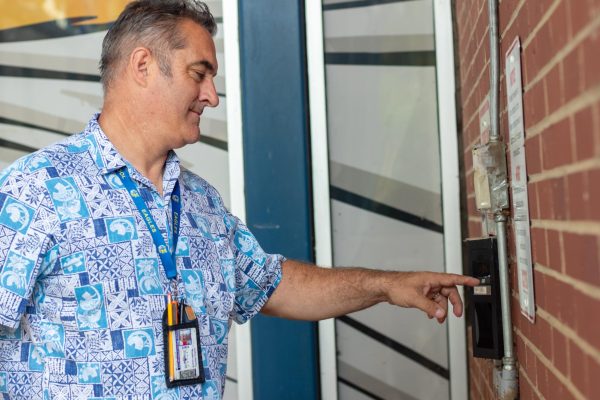Transgender students deserve to feel welcome at East
Globally, trans people report a significantly lower mental health. This may be due to many things: pre-existing sources, the receiving end of bigotry, the tripled presence of mental illness or the stress of literally changing completely. While impressive, the progress of trans people comes with a cost.
Just under one percent of teens nationwide identify as trans. Is this group less visible at East Meck? If so does that make East at fault? Google searches containing the words “trans teens” are blocked on the school server and dead names appear on class rosters. Non-binary and trans figures have appeared throughout history, whether the textbooks want to admit it or not.
“I don’t think that there are opportunities in minor ways, and especially with microagressions for students who are not cis (identifying with their gender as assigned at birth) to feel comforted [at East],” said senior Ash Warren, co-president of East’s Gay Straight Alliance.
Microaggressions are the small things, like the aforementioned incorrect pronouns or calling a trans person by the name that they were assigned at birth. Members of the trans community conclude that to be trans in today’s society means being alienated.
One cause of death for trans people that seems overarchingly present is homicide. Trans women of color have a total life expectancy of 35 years. However, in North America the male life expectancy is 76 years. The murders of trans-women-of-color often go overlooked, because society tends to deny their existence in the first place.
“There’s little talk about transgender women of color [at East]. You get no [examples] of who these people are, there’s no way for them to be out there empowering themselves,” said senior Monica Hernandez, president of the Empowering Girls of Color Club.
While life is very difficult for transgender people, statistics have proven that it is significantly harder as a trans woman of color. In 2019 alone, there have been eighteen trans women of color killed.
Hernandez’s club works to build bridges to reach people who aren’t often in the spotlight or listened to. Empowering Girls of Color understands that it is important to make everybody feel welcome in society. Hernandez believes that the best way to make trans people at East feel represented and welcomed is hosting an event not only for them. One of Hernandez’s proposals is a small pride event at East, as an attempt to include everyone in the club’s activism.
“I try really hard to greet every student who walks in my classroom or near my classroom, to make them feel welcome on campus,” said Robin Cluse, a Sources of Strength and Student Congress adviser.
Cluse explains that there has been extensive progress in the acceptance of LGBTQ+ students at East since she has arrived, but “it can always be better.”
Characteristically, teenagers feel out of place at school. Trans teens feel that everywhere they go. So what can East do to help people with varying gender identities feel welcome? Some suggest a more open expression of acceptance and making pronouns more prevalent at school. Little things, like being able to change the name that appears on the class roster could help foster the inclusion of trans students. Even when students do present as their birth-given gender, when posed with the opportunity, society infringed gender norms do not suit some students.
“I don’t like dresses at all, they make me feel uncomfortable. Somebody else wore a tuxedo with me,” said Franny Rukenbrod, a freshman choir student who chose to wear a tuxedo to her first choir concert.
Part of feeling like part of the community, to all students, is having others stand with you. This is an example of open acceptance of every students decision to express themselves.
Back to the clubs that are working to build bridges between all kinds of students. This is where their efforts at East truly start to affect the lives of the students. This is when students feel connected enough in their communities to be themselves. While valiant, efforts like these can always be expanded upon.
“I feel like at least having one person to talk to lets students know that [gender identity] is not something that we’re ignoring,” Warren said.
Your donation will support the student journalists of East Mecklenburg High School. Your contribution will allow us to purchase equipment and cover our annual website hosting costs.





